"My friends and family could tell some very interesting stories about me. I’ve often gotten myself into sticky situations. I’m an expert at hurting myself, I always seem to get lost, and I’m incredibly clumsy. I also "

Jag’s F-Type now has a fjord engine
300hp turbo four-cylinder engine powers F-Type up the Norwegian coast
There will be a certain set of locations which your mind has pre-packaged as appropriate for the handover of a set of key for a Jaguar F-Type.
That low, lean, luscious shape lends itself to the steps of the Hotel Du Paris, or the parking bay of an exclusive Saville Row tailor. It does not, usually, also encompass a gravel-filled car park at the bottom of an out-of-season ski-lift. Still that is where we find ourselves, somewhere along the western coast of Norway, on a summer’s day warm enough for shirtsleeves but not warm enough to quite melt all of the ice on top of the mountains that hem the car park in.
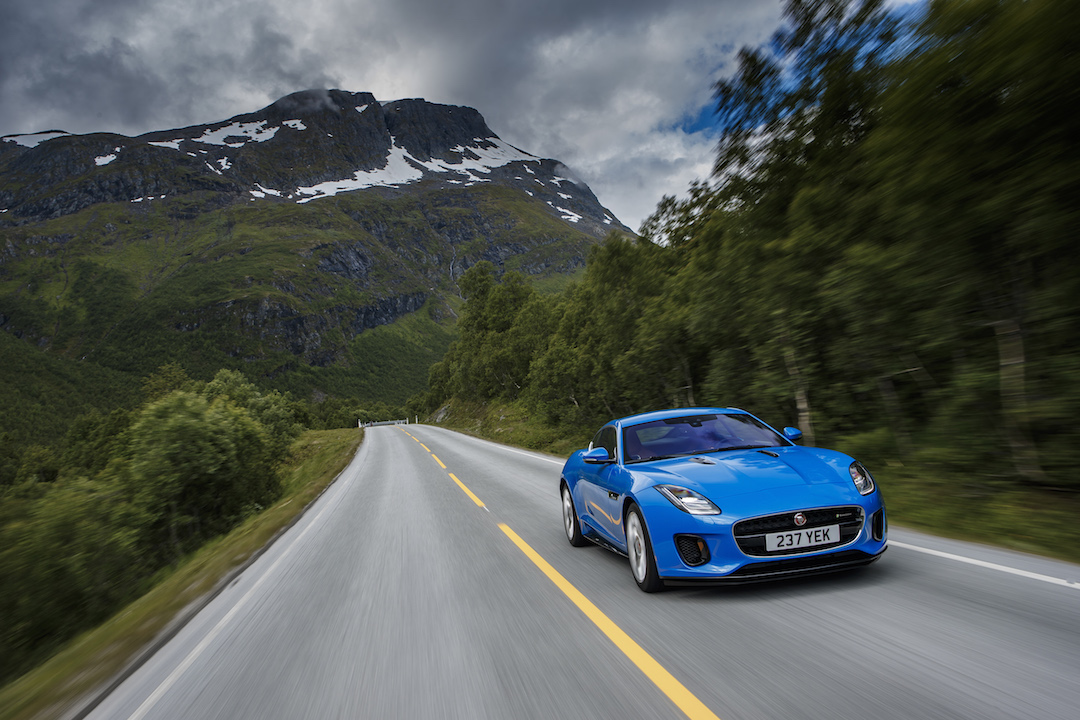
We’re actually in Strandjafellet, just south of the tiny coastal town of Alesund. Alesund is the picturesque spot where cruise liners, touring the fjords, come to dock and disgorge their human cargo for a spot of sightseeing. Strandjafellet would be, in winter, where they might come to ski, but right now it’s a lonely, misty mountainside, covered in shale and stones, not snow.
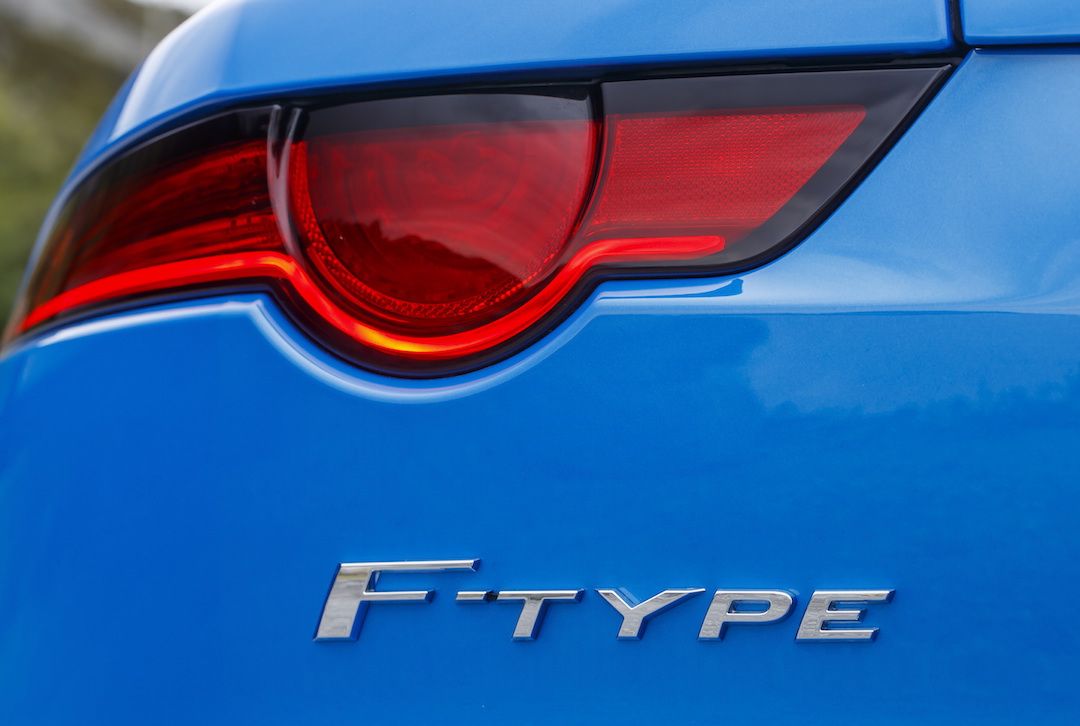
It is here that Jaguar has brought us for a little surprise. What was supposed to be the launch of the new Range Rover Velar (which has just, effortlessly, climbed up the snow-less ski-slope and back down again) has been granted an unexpected, glamorous addendum — a chance, a first chance, to sample Jaguar’s gorgeous F-Type sports car with its new engine.
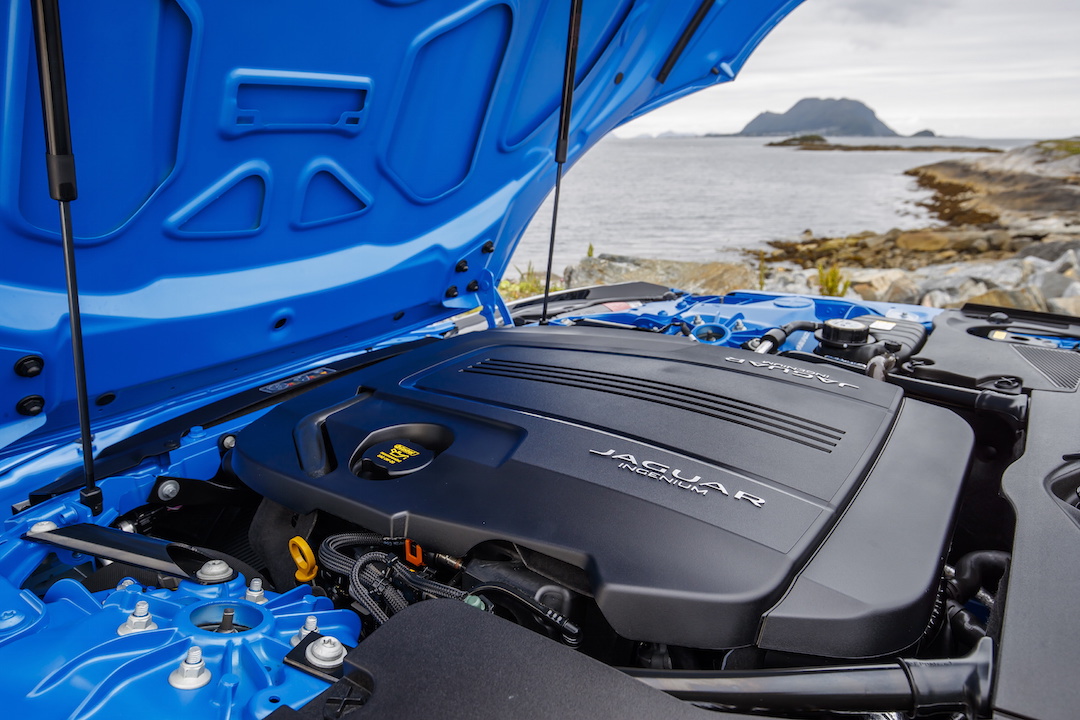
Ah. Yes. Reality intrudes into my Nordic Marvel Comics reverie. Jaguar, as with every other car maker, must pay heed of ever tightening emissions legislation, not to mention the need of many customers to not have to take out a second mortgage to cover their fuel bills. Just as Porsche dropping a 2.0-litre turbo flat-four into the Boxster and Cayman was inevitable, so to was a four-pot F-Type.
Which raises some thorny issues. The mountains which sweep down to their deep fjords, and the long, endless tunnels that bore beneath them, would be idea for a bit of sound reflection. A hard, Scandi surface upon which to bounce the soundwaves of those existing V6 and V8 engine. A four-pot, though? Porsche has come in for more than a little stick for the sound quality of its turbo flat-four, so has Jaguar slipped up in the same way with a 2.0-litre F-Type?
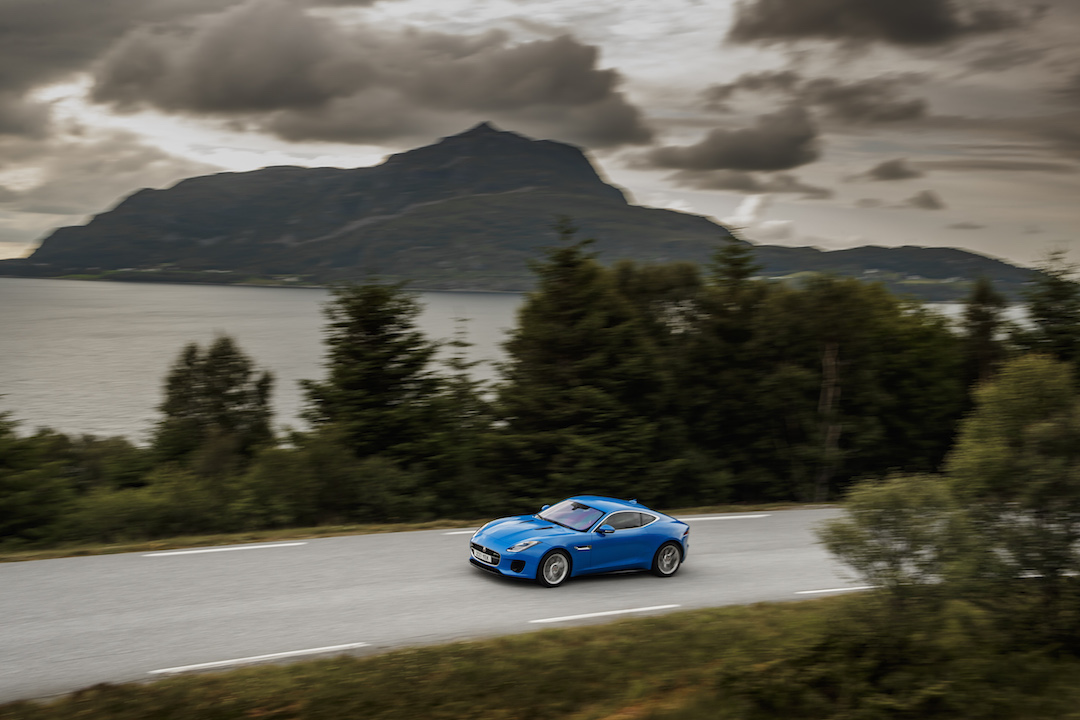
Well, for a start, the Porsche problem is oft overstated. There are some Zuffenhausen purists who will tell you that Porsche has ruined the Cayman and Boxster with the engine engine, but while the sound is certainly different and less overtly melodic than that of the old flat-six (thing mid-nineties Subaru Impreza Turbo instead) the professional complainers do seem to overlook the lower weight, lower emissions, improved power (150hp per litre is nothing to sneeze at), the potential for 42mpg when you’re taking it gently (which is most of the time, let’s face it) and the undimmed straightline performance.
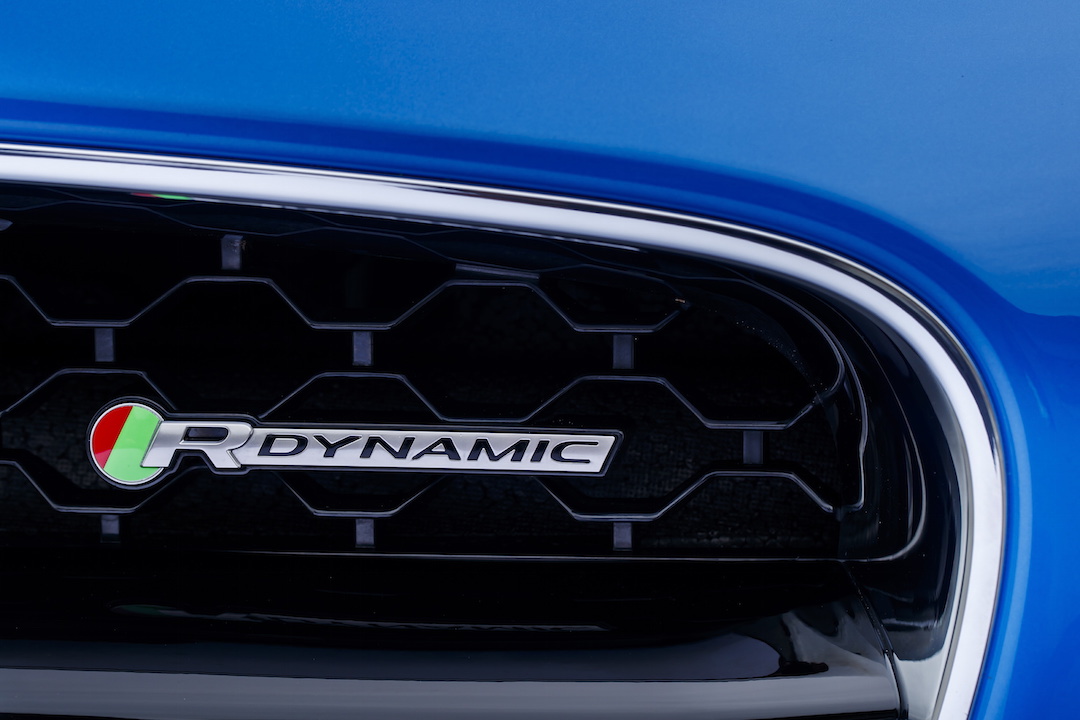
Jaguar has, clearly, been taking notes. The F-Type’s new ‘Ingenium’ engine may well be missing two (or four, depending) cylinders compared to the rest of the family, but it’s not lacking for technology. It boasts a 200-bar pressure direct injection fuel system, an integrated exhaust manifold with a closely-paired twin scroll turbocharger, and a clever new valve system on which the camshafts don’t directly press on the valves to open and close them, but rather actuates a hydraulic system which can allow near-infinite valve timing for improved response, and lower fuel consumptions.
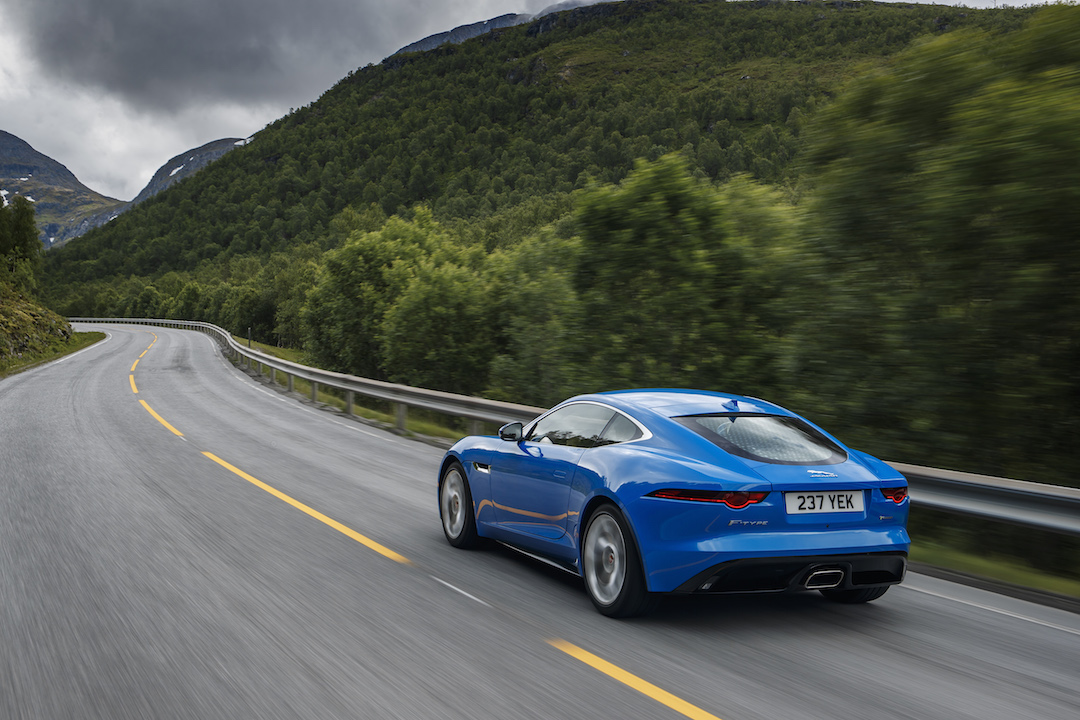
All of which technical mumbo-jumbo adds up to a Porsche-matching 150hp-per-litre specific output, a 30g/km trimming of the Co2 emissions compared to the V6 engine, and a 52kg weight reduction, almost all of it from the nose.
Because of that, Jaguar has retuned the chassis, reducing the spring rates by four per cent at the front and three per cent at the rear, and tweaking the steering setup too. “The result of the intensive development process is an even better balance, an even more connected feel, and enhanced ride comfort. Enthusiasts will want to drive this car: this is a true F-TYPE, with its own unique character” says Mike Cross, the legendary Chief Engineer for Jaguar, and the man who has created the current ‘feel’ of both Jaguar and Land Rover chassis.
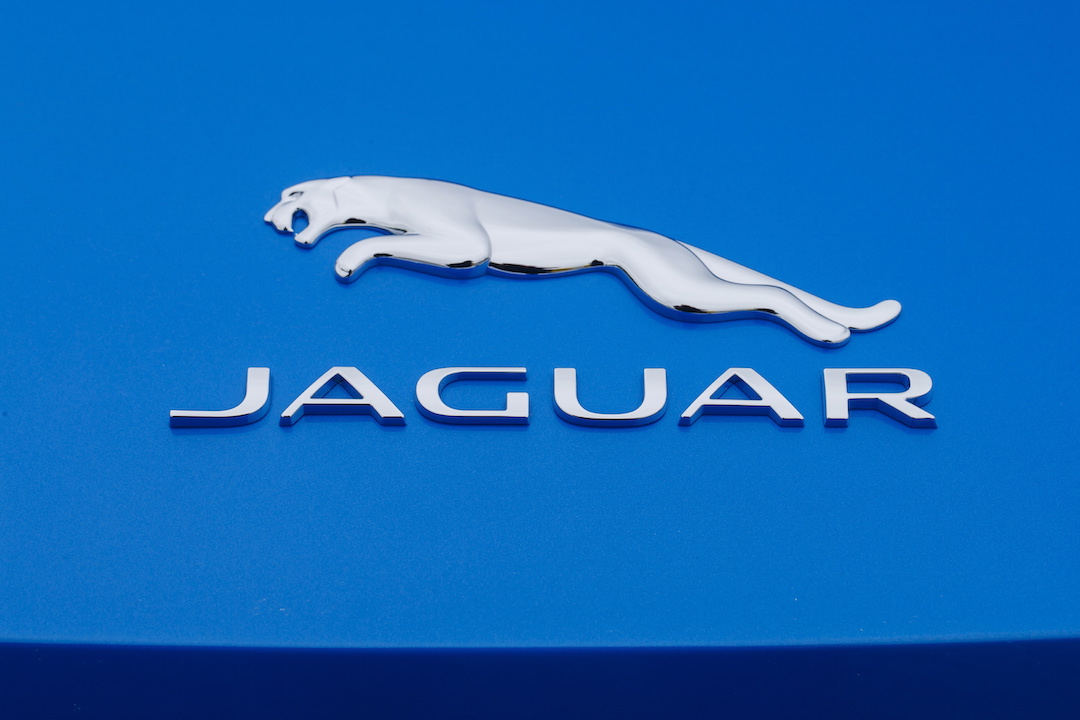
The claim is that, thanks to the reduced weight, the four-cylinder F-Type is actually more nimble than its V6 and V8 cousins, but the only exterior difference is slightly altered 18-inch alloy wheels (19-inch on R-Dynamic models) and a single, centrally-mounted exhaust pipe.
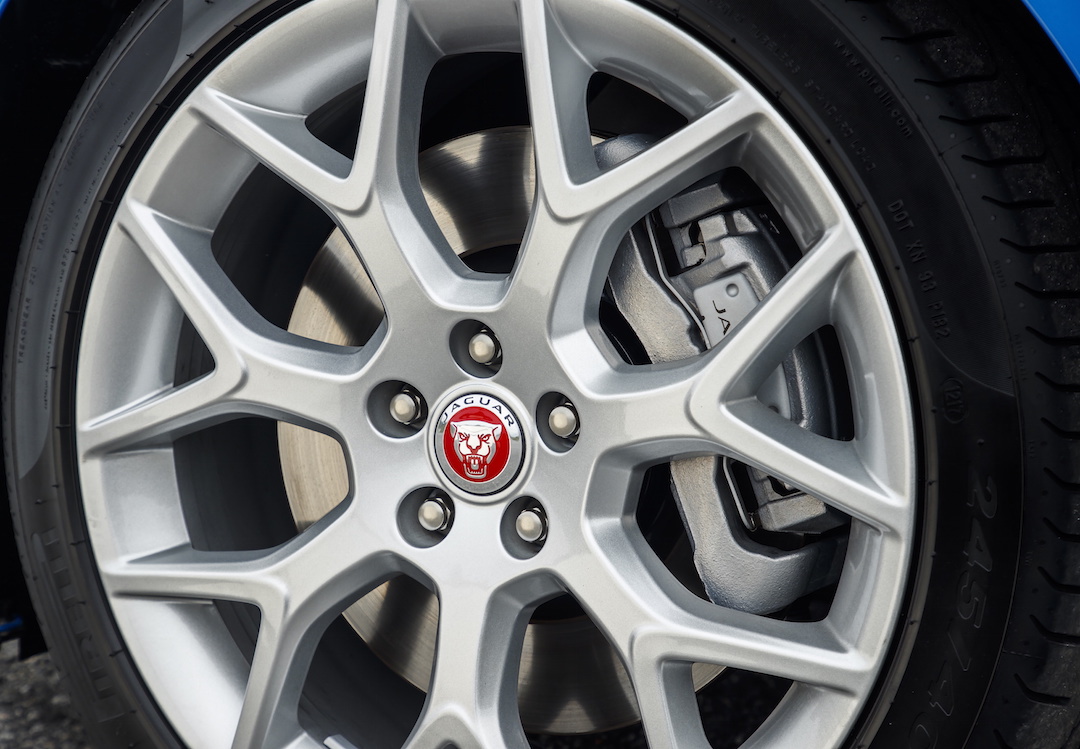
Strolling up to our bright blue Coupe test car, the flush door handles pop out in the same way, and the low-slung cabin looks very much identical to the bigger-engined versions. New seats, which are a little slimmer, have liberated a touch more legroom for the two occupants, but the rest is the same, bar some add-ons and improvements for the InControl Touch Pro touchscreen in the centre of the dash.
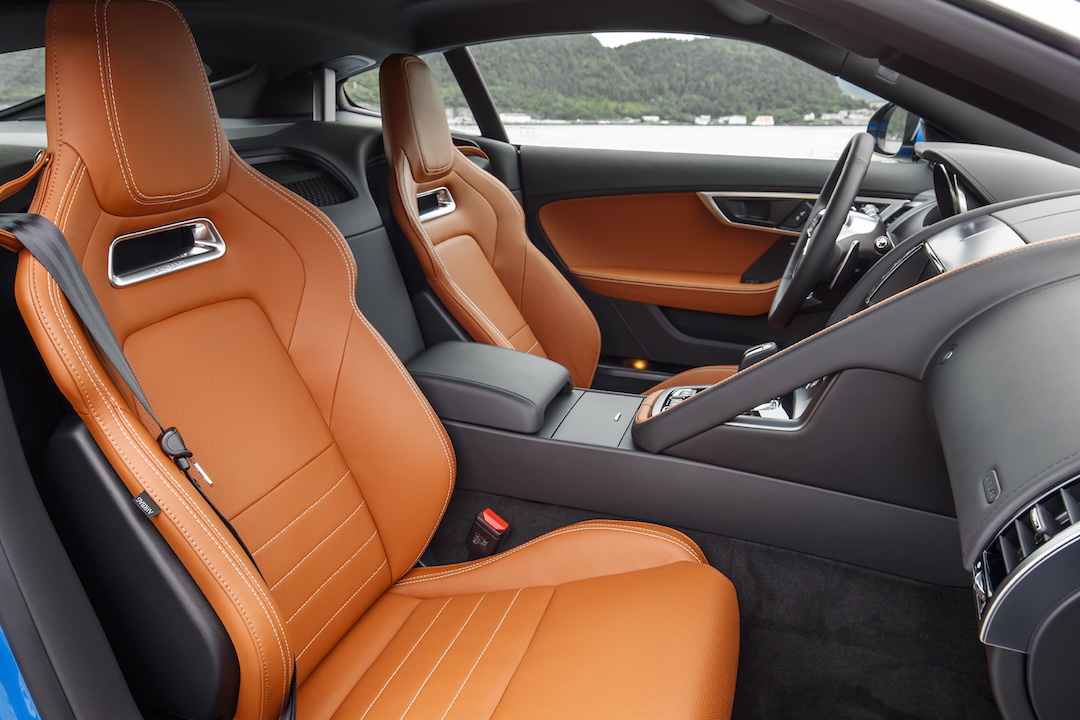
Settle. Take in the view of pine trees and distant, still water from across that long expanse of bright blue bonnet. Thumb the starter.
OK, so straight away the four-cylinder engine isn’t as musical as the V6 or V8. It just couldn’t be, it’s not possible. But Jaguar has done a good job with that which it has to work with. Thanks to a standard-fit sports exhaust, the littler engine throbs with purpose and a pleasantly gruff tickover, as we pop the selector for the eight-speed auto into D (no manual version will be offered, for now) and nose out onto the two-lane blacktop headed for Sykkylven and our ferry connection across the fjord to Alesund.
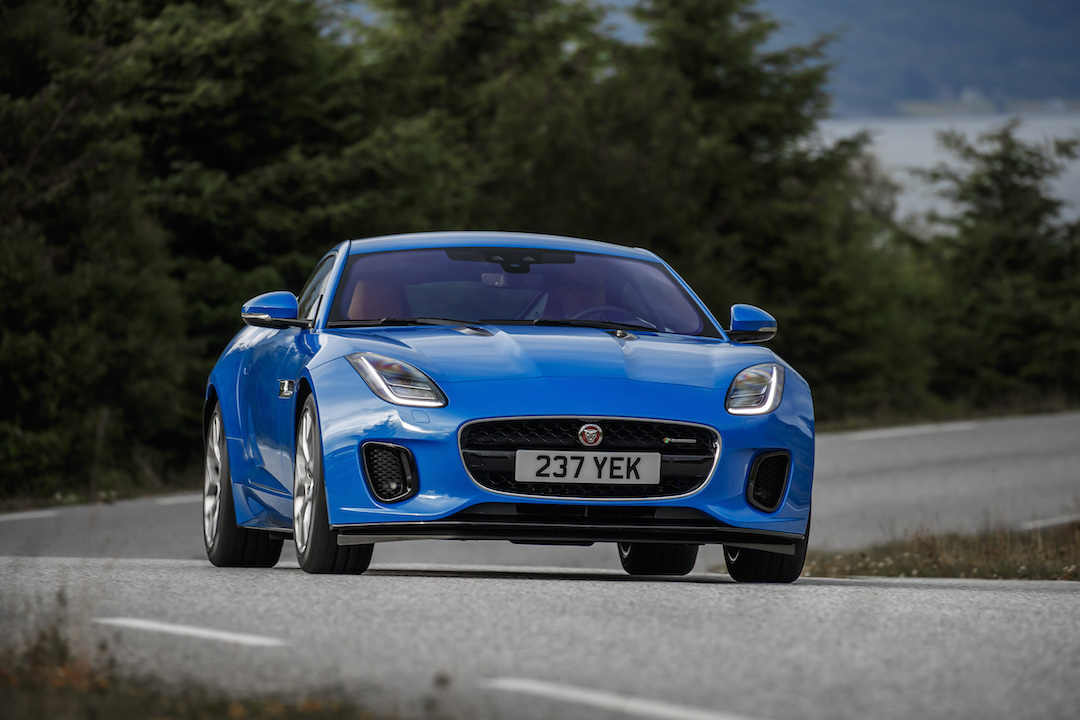
The first thing you notice is that Norway’s speed limits are ridiculously low, and, we’ve been warned, tightly policed. Chastened thus, the opportunities for a good, long prod of the accelerator pedal are furtive and fraught with guilt, but they are enough to reveal that the four-cylinder F-Type is most definitely not slow.
It surges forward on a strong rush of 400Nm of torque, pushing past 62mph from rest in a respectable 5.7secs. That’s slower than the rival Cayman, but the Jag is heavier so perhaps we can forgive it, a little. Even if you can’t forgive it, from inside the cabin, it feels quicker, with the bonnet doing a priapic jiggle as you roll over imperfections in the tarmac, and the gorgeous scenery becomes a touch more blurry.
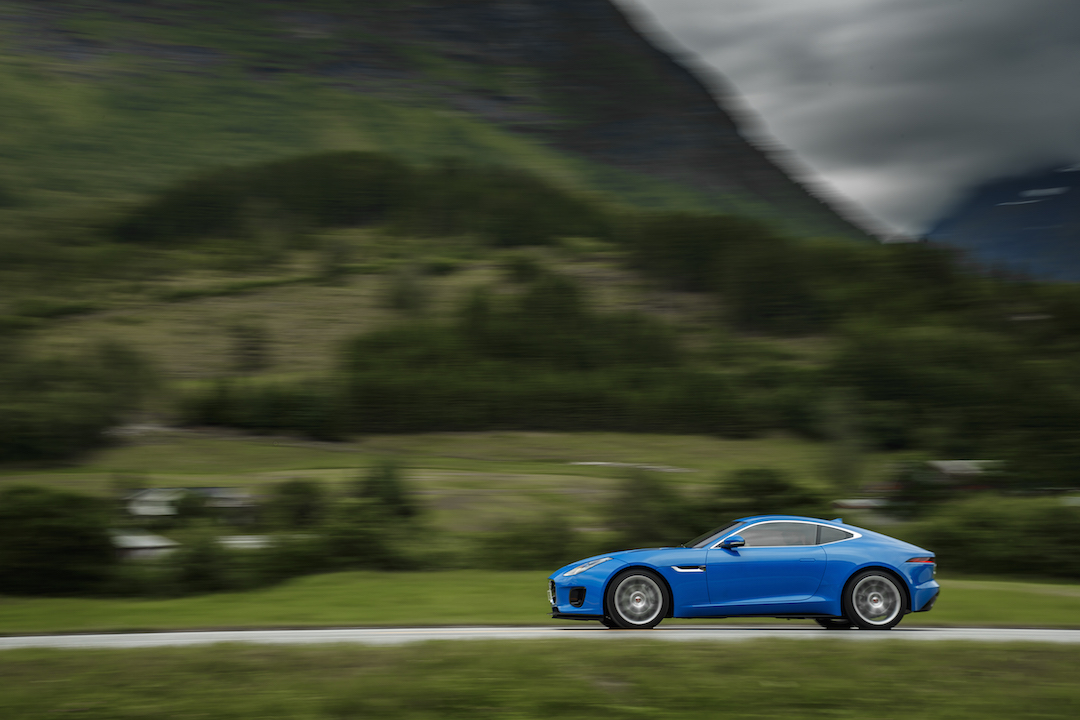
And the noise? It’s actually pretty good. Jaguar has engineered in a gruff, slightly rough-edged sound under acceleration, rather similar to that of a VW Golf R. Not bombastic like the V6 F-Type, but hardly a shrinking violet either. And there’s a delicious over-run pop and gurgle if you back off suddenly, which is a bit of a dead giveaway to any prowling policeman, but thankfully the Norse Alte Bïll leave us well alone.
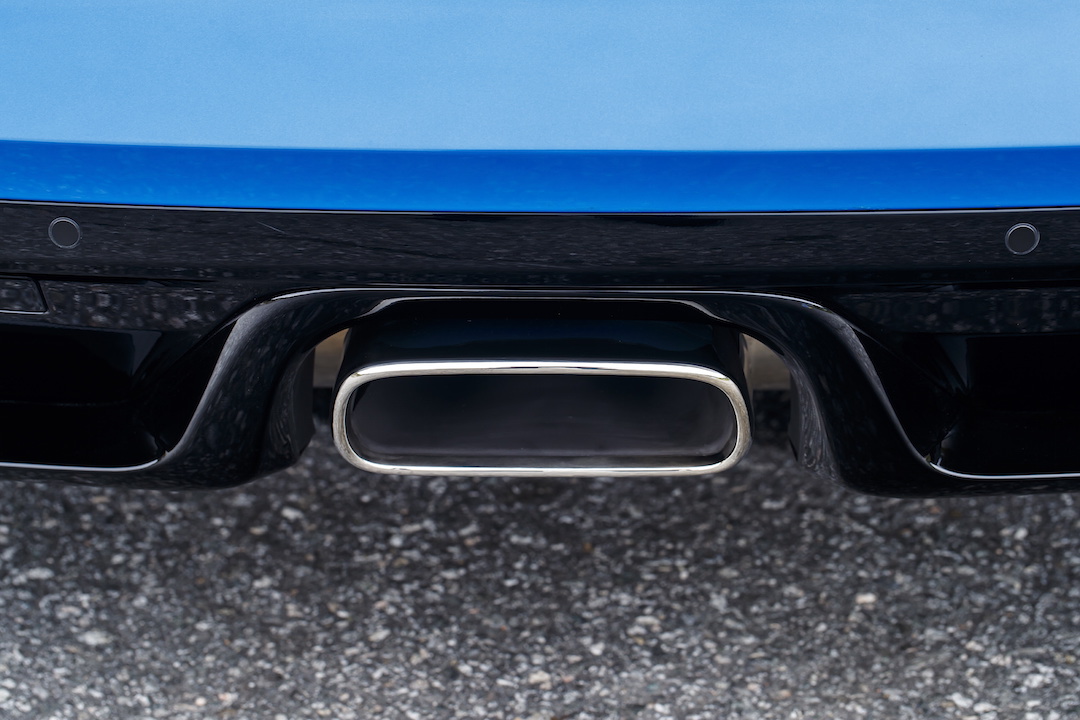
Which means we can explore the handling a bit. I guess Mike Cross can detect the extra agility in the four-pot F-Type, but I couldn’t — not without a back-to-back comparison to the V6 I guess. It just feels like… an F-Type. Not surprising, but very pleasing with gorgeous weight and communication to the steering, fantastic chassis balance, and no small amount of refinement when you just back off and cruise. You’ll not unstick the rear wheels as easily as you will in the V6 but then, perhaps, that’s no bad thing on unfamiliar roads with vertical drops into deep water just next to your passenger. The F-Type just scythes through the roads, all of them beautifully smooth, which flex and fold their way over these mountains and along the edges of the fjords. It feels both effortless GT and engaging sports car all in one. The only flaws we could find were an occasional, and inconsistent, tendency to tramline, and the fact that the cabin looks and feels slightly downmarket, although that’s partially compensated for by the £2,000 cut in price compared to the V6, with the four-cylinder F-Type’s prices kicking off at £44,900.
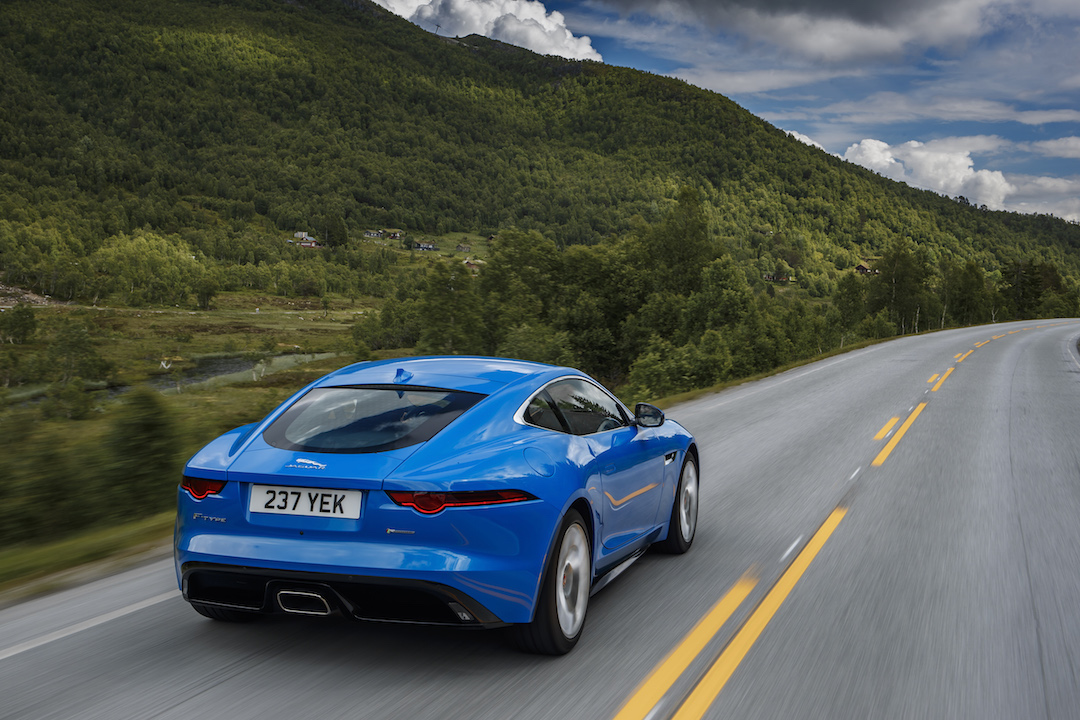
The Porsches against which it competes are quicker out of the blocks and cheaper to buy, but the F-Type looks and feels more special, more enticing. Clambering out onto the deck of the ferry as it crosses to Magerholm, the F-Type looks more glamorous, downright sexier than the German rivals. It’s a car which you’d steal long, lingering looks at as it sits on your driveway. Four cylinders or otherwise, there’s a magic to it which most cars just lack.
And that’s even true when being presented with the keys in a dowdy car park at the bottom of a deserted mountain.
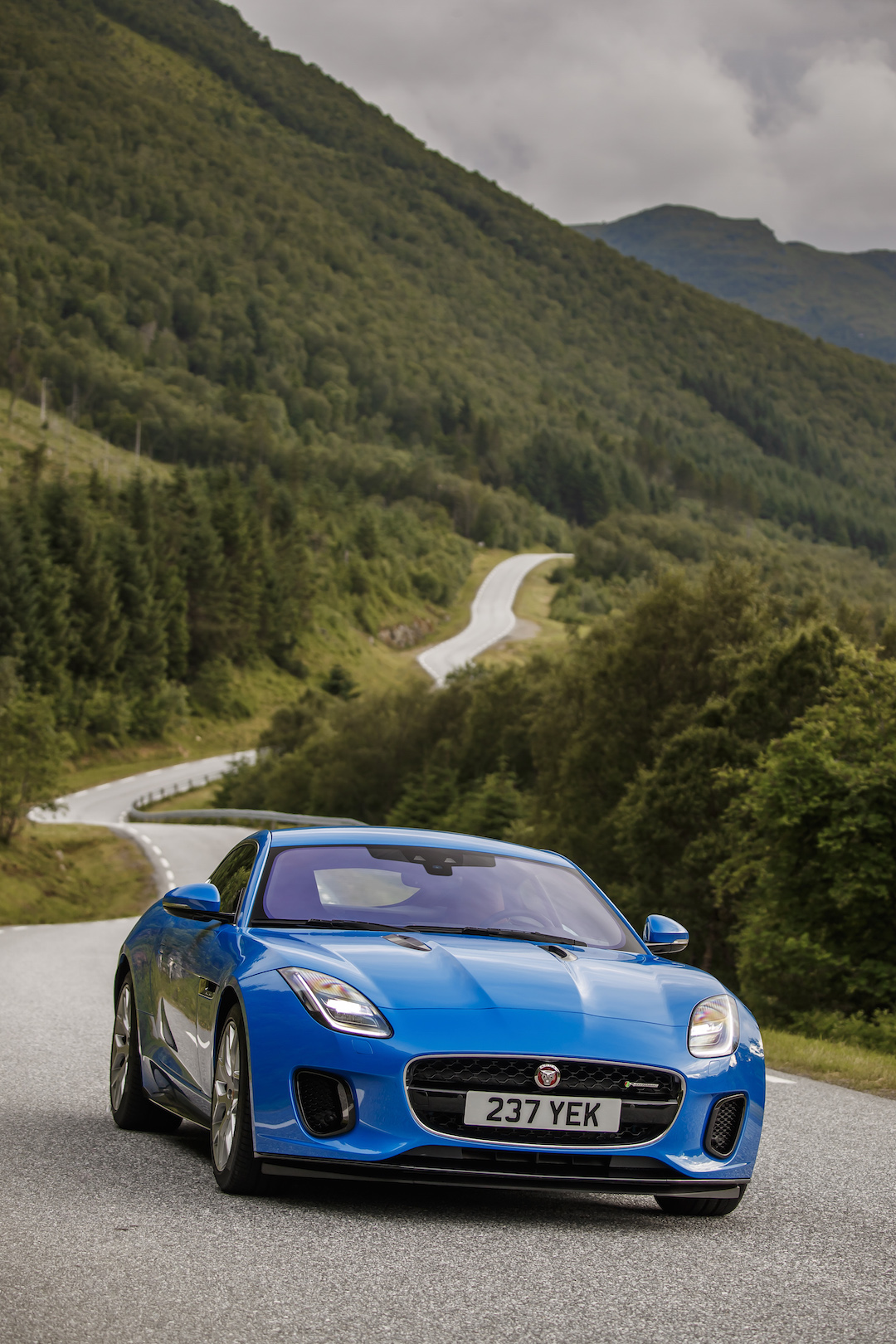
CLICK TO ENLARGE










